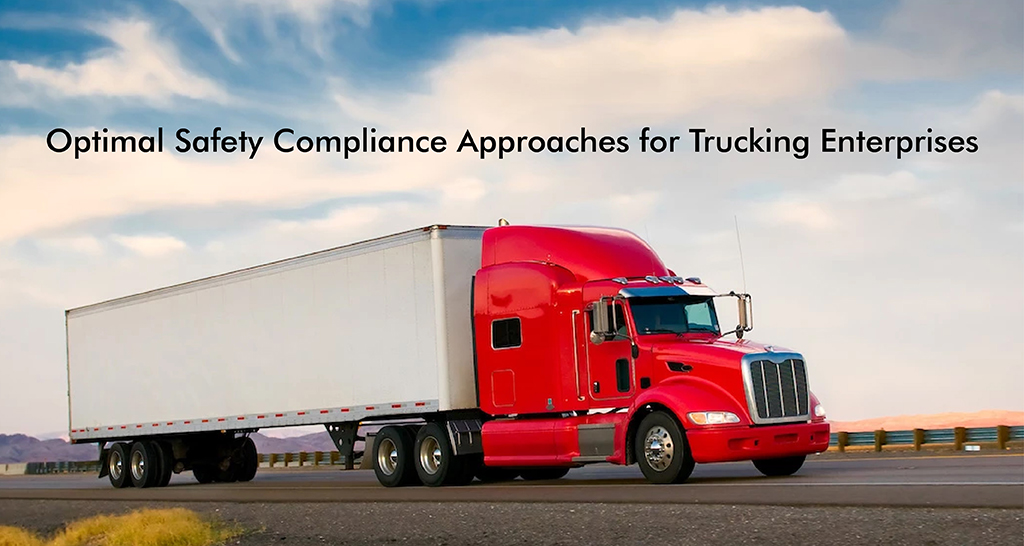In this wide transport landscape, trucking enterprises stand at the crossroads of innovation and stringent safety regulations. For this, the intricate balance between operational efficiency and safety compliance is more crucial than ever.
However, with the vast stretches of highways crisscrossing the nation and a relentless demand for goods movement, the trucking industry faces relentless challenges. And they are not limited to ensuring safe deliveries but also adherence to safety measures.
With such an expansive network and ever-increasing expectations, it’s crucial for trucking enterprises to continually evolve. Of course, it doesn’t end here because redefining safety standards is equally important.
In this post, we will discuss the most effective strategies and best practices that trucking businesses can adopt. Doing so will help them to ensure they are in compliance with current safety regulations.
So, let’s dive right in!
1. Comprehensive Driver Training
Let’s dive deep into the world of all-encompassing driver education. Far from just being a course on how to operate a truck, it’s a journey into the realms of:
- Safety Protocols: Emphasizing the importance of road safety and how to handle emergency situations.
- Efficient Driving: Tips and tricks on how to save fuel and drive optimally.
- Soft Skills: Covering essential areas such as customer service and managing on-road stress.
The ultimate goal? To produce drivers that aren’t just skilled but are ambassadors of safety, efficiency, and professionalism. It’s not just about driving; it’s about shaping the industry’s future.
2. Upholding Road Safety: Drug & Alcohol Testing Essentials
Every day, your trucks cruise the highways, representing not just your company but the promises you have made to countless clients. But, with this vast operation comes a significant responsibility.
Ever considered how to ensure that every individual driving under your company is alert, clear-headed, and devoid of intoxicating influences?
That’s where dot consortium comes into the picture. They’re not just collaborators; they’re your gateway to unparalleled safety standards:
Drug and Alcohol Testing: Make sure your drivers are always in the best state to take the wheel.
Extended Services: Branching out into DNA testing and more, offering a comprehensive suite of services.
Spread across the U.S., they don’t just ensure compliance; they redefine it, making it an experience rather than just a checkbox.
3. Embrace Technology for Enhanced Safety and Efficiency
Gone are the days when smartphones were at the top of modern tech in daily life. Now, when it comes to managing a fleet, there’s a pool of technological tools at your disposal.
Electronic Logging Devices (ELDs): These devices are essential for ensuring that drivers are adhering to regulations concerning their driving hours. By monitoring driving hours, ELDs ensure drivers aren’t overworked, reducing the risk of fatigue-related accidents.
Telematics Systems: Beyond just GPS tracking, modern telematics systems can monitor everything from fuel consumption to engine health. Such real-time feedback enables fleet managers to address potential issues immediately, often before they become serious problems.
4. Prioritize Regular Vehicle Maintenance
While it might sound like a given, the regular maintenance of vehicles is a step that’s often overlooked. Here’s why it’s essential:
Safety: A well-maintained truck is less likely to encounter unexpected issues on the road, thereby ensuring the safety of the driver and other road users.
Cost Efficiency: Regular maintenance might seem like a recurring cost. But in the long run, it’s far cheaper than the cost of major repairs or replacements due to neglect.
Uptime: Regular check-ups reduce the likelihood of unforeseen breakdowns, ensuring that vehicles remain operational and deliveries are on time.
5. Encourage Open Communication
Your drivers are the front-liners of your operation. Thus, it is important to know their feedback and suggestions. It will help you with the following:
Real-time Insights: Drivers face various challenges daily, from traffic congestion to unpredictable weather. Their experiences can offer actionable insights to improve operations.
Fostering Trust: Creating an environment where drivers feel comfortable sharing their concerns or suggestions boosts a sense of trust and loyalty, which is essential for long-term retention.
6. Stay Abreast of Regulations
Navigating the world of fleet management means being compliant with ever-changing regulations. So, it is required to stay informed to avoid potential pitfalls. Here’s how it helps:
Avoiding Penalties: Being unaware or non-compliant with updated regulations can lead to significant fines or legal complications. Staying informed saves money and potential reputational damage.
Ensuring Safety: Many of these regulations are in place to ensure the safety of drivers and the general public. Adhering to them not only keeps operations legal but safe.
Wrap Up
Navigating the road of trucking safety compliance might feel overwhelming initially. Still, with these strategies, it can become an integral part of your operations. It’s about more than rules and checkboxes. Rather, it’s about valuing the lives of your team, the faith your clients place in you, and the well-being of every road user. So, gear up and steer your enterprise towards a future where safety is the unwavering focus. Safe journeys ahead!







